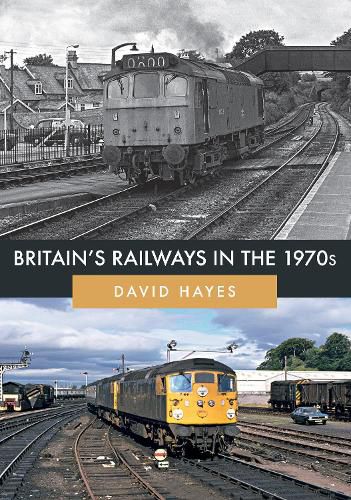Readings Newsletter
Become a Readings Member to make your shopping experience even easier.
Sign in or sign up for free!
You’re not far away from qualifying for FREE standard shipping within Australia
You’ve qualified for FREE standard shipping within Australia
The cart is loading…






The 1970s was a unique period for Britain’s railways. Steam had not long been replaced by diesel traction, the West Coast Main Line electrification was well underway with new and more powerful locomotives, and the colourful ‘rail blue’ livery projected an image of a new and altogether cleaner railway - there was plenty to be optimistic about.
It was also a good time for the railway photographer - much of the railway infrastructure and complex track layouts of the steam era remained intact, freight traffic was plentiful and invariably passed through marshalling yards for sorting, and there were plenty of locomotive classes of various shapes and sizes, often regionally based, to pique the interest.
As well as this, though, the seeds were being sown for an altogether different railway - one where locomotive standardisation was being pursued as a means of lowering fleet maintenance costs, where the freight focus was a migration to block trains travelling from supplier directly to customer, avoiding the inevitable delay and expense of the marshalling yards, and one where track layouts were being simplified and streamlined to increase speed and reduce permanent way maintenance.
The photographs in this book capture a flavour of the railways during this fascinating transition period.
$9.00 standard shipping within Australia
FREE standard shipping within Australia for orders over $100.00
Express & International shipping calculated at checkout
The 1970s was a unique period for Britain’s railways. Steam had not long been replaced by diesel traction, the West Coast Main Line electrification was well underway with new and more powerful locomotives, and the colourful ‘rail blue’ livery projected an image of a new and altogether cleaner railway - there was plenty to be optimistic about.
It was also a good time for the railway photographer - much of the railway infrastructure and complex track layouts of the steam era remained intact, freight traffic was plentiful and invariably passed through marshalling yards for sorting, and there were plenty of locomotive classes of various shapes and sizes, often regionally based, to pique the interest.
As well as this, though, the seeds were being sown for an altogether different railway - one where locomotive standardisation was being pursued as a means of lowering fleet maintenance costs, where the freight focus was a migration to block trains travelling from supplier directly to customer, avoiding the inevitable delay and expense of the marshalling yards, and one where track layouts were being simplified and streamlined to increase speed and reduce permanent way maintenance.
The photographs in this book capture a flavour of the railways during this fascinating transition period.